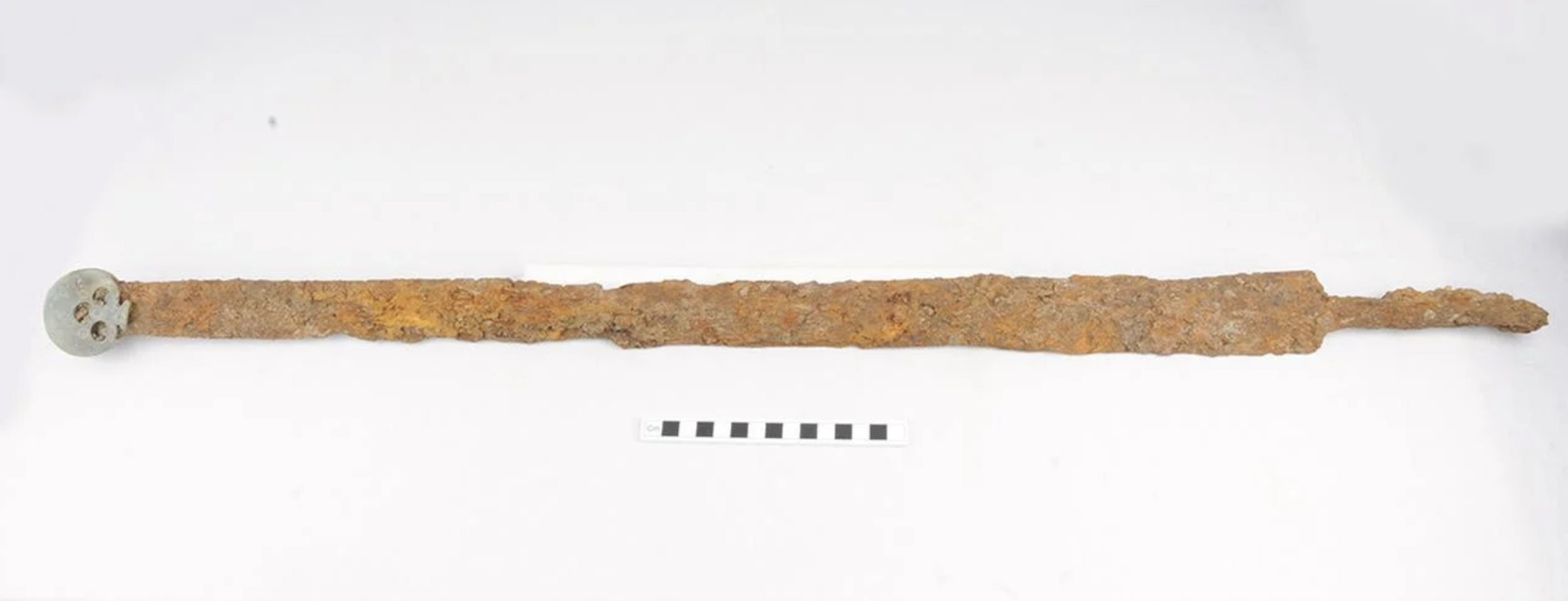Rare Roman Swords Lead to Discovery of Iron Age and Roman Settlement in Gloucestershire!
A chance discovery by a novice metal detectorist near Willersey, Gloucestershire, has led to the unearthing of a significant archaeological site spanning from the Early Iron Age to the Roman period. The breakthrough came in March 2023 when Glenn Manning, attending only his second metal detecting rally, stumbled upon two rare Roman cavalry swords lying just an inch beneath the soil.
“I had a feeling that morning I’d find something special,” said Manning. His instincts proved right when he uncovered two spatha-type swords, which would have been wielded by Roman cavalry during the 2nd to 3rd centuries CE. Experts believe the swords may have been deliberately buried, possibly to keep them from falling into enemy hands during Saxon incursions.
Photo Credit: James Haris
The find was promptly reported to the Portable Antiquities Scheme. Thanks to the generosity of both Manning and the landowner, the swords have been donated to the Corinium Museum in Cirencester, where they are set to go on public display from 2nd August 2025.
X-rays carried out by Historic England revealed striking differences between the swords. One was ornately made using a technique known as pattern welding, likely indicating it belonged to someone of high status. The other was simpler in design.
Prompted by this exceptional find, Historic England and Cotswold Archaeology launched a full-scale excavation. Despite heavy January rains, teams of archaeologists and volunteers unearthed a wealth of evidence pointing to long-term settlement on the site. “We went from a ploughed field and a couple of swords to uncovering centuries of history,” said Peter Busby, Project Officer at Cotswold Archaeology.
Photo Credit: Corinium Museum
Among the most remarkable features discovered were up to four Iron Age ring ditches, some measuring 18.5 metres across, a large rectangular enclosure with a five-metre-wide ditch, and remnants of what may be a Roman winged villa. Artefacts such as ceramic roof tiles, box flue tiles (possibly part of a hypocaust heating system), and fragments of painted plaster support this theory, although further surveys are needed for confirmation.
Even more intriguing were human remains found across the site. One Iron Age burial included an iron band around the upper arm, found near a horse skull. In another trench, archaeologists found a dismembered arm bone and a separate hand in a ditch, suggesting either ritual activity or violent conflict.
“This dig offers us an extraordinary look at settlement life in Gloucestershire from the Early Iron Age through to the Roman period,” said Ian Barnes, Senior Archaeologist with Historic England. “It provides crucial insight into how communities adapted and changed, particularly during the Roman conquest.”
Photo Credit: Corinium Museum
With such a wealth of finds, Historic England is considering the site for legal protection. Once the full analysis is complete, the agency may recommend its designation as a scheduled monument.
Emma Stuart, Director of the Corinium Museum, expressed excitement about the acquisition. “It’s a privilege to receive such rare and valuable items. These swords help expand our understanding of life in the Cotswolds during the Roman era.”
Kurt Adams, Finds Liaison Officer for Avon and Gloucestershire, praised the collaboration that made the discovery possible: “Thanks to the generosity of the finder and landowner, these swords are now safeguarded and will be enjoyed by the public for generations to come.”
This extraordinary chain of events, beginning with a lucky find in a muddy field, has opened a new window into Britain’s distant past, illuminating centuries of history beneath the Gloucestershire soil.


